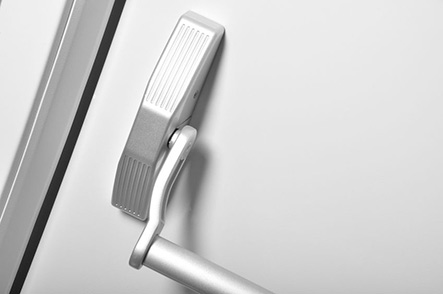Fire Door Inspections
Why Have Your Fire Doors Inspected?
Back in late 2007, new language contained in NFPA 80 (Standard for Fire doors and Other Opening Protectives, 2007 edition) requiring documented inspections for fire-rated door assemblies on an annual basis (Chapter 5, Care and Maintenance) was adopted and DHI officially launched the Fire Door Assembly Inspection program at the DHI Exposition and Trade Show. This included delivering our first Fire Door Assembly Inspection class (DAI600) to over one hundred students The Door Safety & Security Foundation published and released two publications, one is an AHJs Guide and the other is an Owners Guide to provide a detailed understanding of this new standard. These books will help us build awareness of and create demand for our new industry program throughout the built environment.
That was 2007. What about now? NFPA 80, Standard for Fire Doors and Other Opening Protectives, continues to require documented inspections for fire-rated door assemblies to be performed on an annual basis. Chapter 5, Care and Maintenance, addresses the care and maintenance of fire doors and fire windows, both new and existing.
NFPA 101
Paragraph 5.2.1 (2010) states, “Fire door assemblies shall be inspected and tested not less than annually, and a written record of the inspection shall be signed and kept for inspection by the AHJ.” Swinging doors with builders hardware are the most common type of fire door assembly, and are among the most complex due to the myriad of materials and component products that are used to create them. These assemblies often provide accessibility, security, and life-safety functions in addition to their fire-safety protection, also increasing their complexity. Inspectors must thoroughly understand the dynamics of these assemblies in order to correctly evaluate them in the field.
Additionally, the 2009 edition of NFPA 101, Life Safety Code expanded on NFPA 80’s inspection requirements for fire-rated door assemblies where the door leaves are required to swing in the direction of egress travel. NFPA 101 also requires non-fire rated door assemblies to be inspected in conjunction with the fire-rated door assemblies. Currently, NFPA 101’s requirements apply to door assemblies installed in new and existing assembly, day care, educational, and residential board and care occupancies, but those occupancies will continue to increase, especially in light of the CMS adoption of LSC and their requirement for annual inspections. Regardless of economics, doors assemblies will need to be inspected and maintained to code, by law.
Todd Bowen has over 37 years’ experience in the commercial door and fire door industry and has been a Certified Fire Door Assembly Inspector for over 4 years. He does done inspections for major airline maintenance facilities, hospitals and other medical facilities. It would be our pleasure to help your organization be assured that your fire door assemblies meet code and are functional.
The 2012 edition of the Life Safety Code (NFPA 101) requires facilities to complete annual fire and smoke door inspection and testing. Section 18.2.2.2.1/19.2.2.2.1 requires compliance with section 7.2.1 and Section 7.2.1.15.2 requires compliance with NFPA 80 Standard for Fire Doors and Other Opening Protectives (2010 edition, Section 5.2.1) and NFPA 105 Standard for Smoke Door Assemblies and Other Opening Protectives (2010 edition, section 5.2). Inspect and test all rated fire door assemblies for items listed below and identify issues or concerns. All issues should be corrected immediately. Life Safety Code section 7.2.1.15.2 requires all fire and smoke doors to be inspected and tested annually including doors such as:
- Doors with fire protection rating labels
- Door assemblies in exit enclosures – typically stairwells and exit passageways
- Door assemblies in smoke compartment walls
- Hazardous rooms with rated doors
It is recommended that a facility identify all doors to be inspected on a drawing/layout of the facility to track inspections. Use one form for each door and keep documentation for at least three years. Fire Assemblies need a visual inspection for see the opening is in compliance to the following:
- Labels are present and legible
- No holes or breaks in the door of frame
- No sign of damage to the unit or the hardware
- No parts are missing
- Door clearances are within specifications
- Door closers operating correctly
- All auxiliary hardware is functional
- No field modifications have been made
- Additional inspection as required
Fire Rated doors and frames safe lives and property. It will compartmentalize a fire and restrict the spread of smoke and fire. When unit is operation and fully functional a building is a safer structure.


